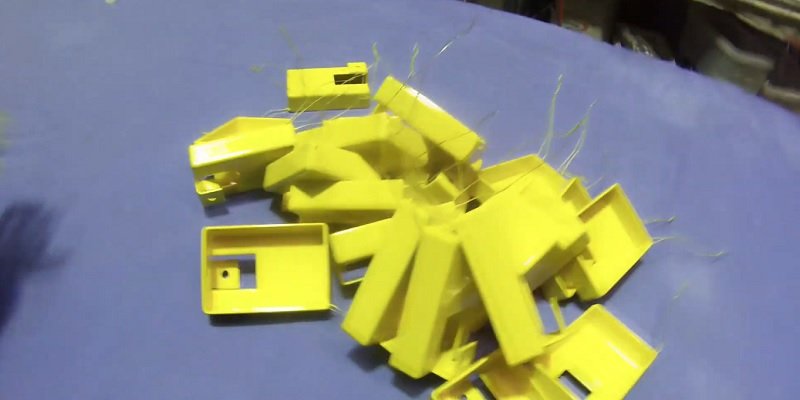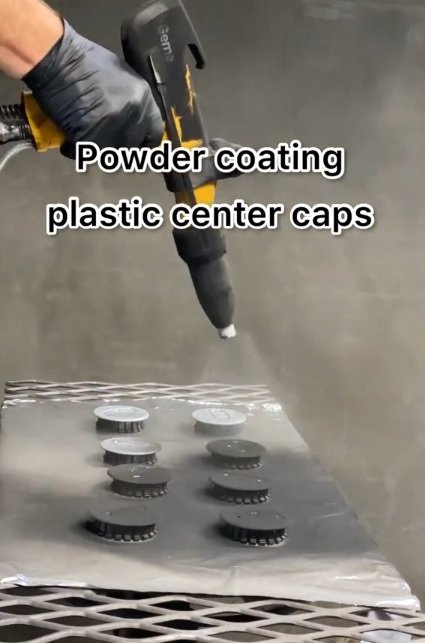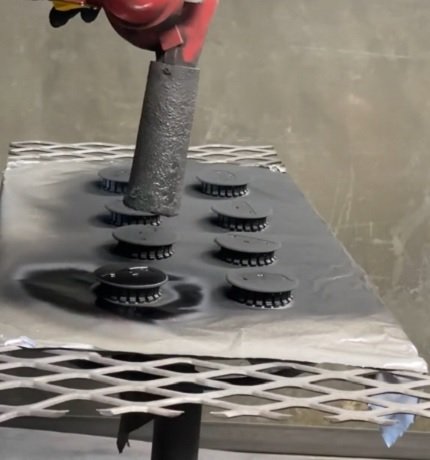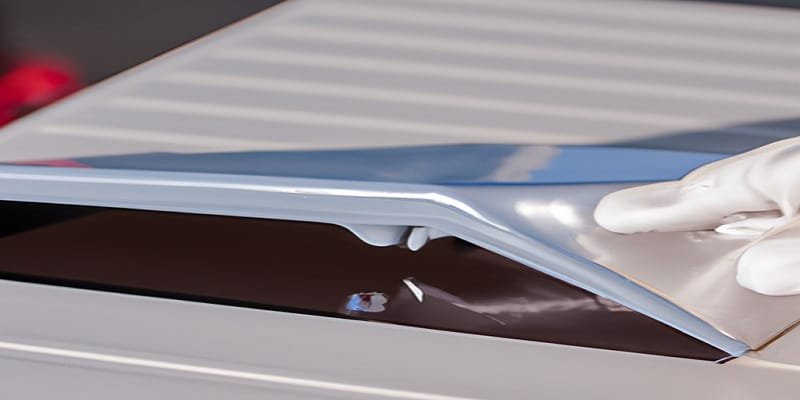Powder coating is a popular method for applying a durable, protective finish to various surfaces. Traditionally, it’s been used on metals like steel and aluminum, but with advancements in technology, many wonder if it’s possible to powder coat plastic. This article takes an in-depth look at whether plastic can be powder coated, how the process works, what materials are suitable, and the advantages and challenges of powder coating plastic.

What Materials Cannot Be Powder Coated?
Before diving into plastics, it’s essential to understand that not all materials can undergo powder coating. The process involves applying a dry powder to the surface and curing it through heat. Therefore, materials that cannot withstand high temperatures, such as certain types of plastic and rubber, are not ideal candidates for traditional powder coating.
Some materials that are generally difficult or impossible to powder coat include:
- Rubber – Melts or burns at the required curing temperature.
- Low-Temperature Plastics – Will deform or melt.
- Wood – Typically unsuitable unless a special process is used.
- Glass – Without specific preparation, it is challenging to achieve good adhesion.
Although some plastics can be powder coated, there are limitations based on their ability to handle the heat involved in the process.
Now, Direct question is Can You Powder Coat Plastic?
The short answer is yes, plastic can be powder coated. Low cure temperature powder coating is perfect for plastic surface. In fact, powder coating is an excellent option for finishing plastic surfaces.
How Powder Coating Works on Plastic

Powder coating is a finishing technique in which a dry powder is electrostatically applied to a surface. After the powder is applied, the coated object is heated, causing the powder to melt and form a solid, smooth layer. This method creates a uniform and durable finish, which is why it’s so popular.
However, when it comes to plastic, the process is a bit different. Plastics have much lower melting points than metals, so the curing process needs to be adapted. Here’s how powder coating can work on plastic:
Electrostatic Application: Just like metals, powder can be electrostatically applied to plastics. The plastic surface is charged, and the powder sticks to it due to the electrostatic attraction.
Lower Temperature Curing: One of the main challenges with powder coating plastic is the curing process. Traditional powder coating requires high temperatures (around 350°F to 400°F) to bake the powder onto the surface. For plastics, however, low-temp powders have been developed. These powders can cure at temperatures as low as 250°F, making them suitable for plastic substrates.
Surface Preparation: For powder to properly adhere to plastic, surface preparation is essential. This can include cleaning, sanding, or using primers designed for plastic surfaces.
What Temperature Do You Powder Coat Plastic?
Temperature is a critical factor when powder coating plastic. Plastics generally have a lower heat tolerance than metals, so using the right type of powder and the correct curing temperature is important to avoid melting or warping the plastic.
Low-temperature powder coating: Many plastic surfaces can be coated with powders that cure at temperatures between 250°F and 300°F. These powders are specifically designed for heat-sensitive materials, allowing the plastic to maintain its structure while still creating a solid, protective layer.
Plastic-specific curing: Some advanced powders can even cure under UV light or infrared heat, bypassing the need for prolonged exposure to high temperatures. These are especially useful for plastic applications where heat must be carefully managed.
Will Powder Coating Stick to Plastic?
A common concern when powder coating plastic is whether the coating will stick as effectively as it does to metals. The key to a successful finish lies in surface preparation and using the right powder.
Here’s why powder coating can stick to plastic:
Surface roughness: Powder adheres better to rougher surfaces. If a plastic surface is too smooth, it might require sanding or abrasion to create a texture that promotes adhesion.
Primers: In some cases, a plastic primer can be applied to ensure the powder adheres correctly. This creates a bond between the plastic and the powder, reducing the risk of peeling or chipping.
Electrostatic attraction: When the plastic surface is properly charged, the powder particles cling to the plastic, creating a uniform layer before it is baked or cured.
With the right preparation, powder coating can adhere well to plastic, offering a durable and visually appealing finish.
Can You Powder Coat a Plastic Bumper?
Yes, it is possible to powder coat plastic bumpers, but certain conditions must be met for the process to be successful. Plastic bumpers, especially those used in the automotive industry, are often made from heat-sensitive plastics such as polypropylene or polyurethane. These materials can be powder coated, but they require careful attention to the following factors:
Plastic type: Not all plastics can handle the heat needed to cure powder coating. Bumpers made from high-heat-resistant plastics, like some forms of ABS (Acrylonitrile Butadiene Styrene), are better suited for powder coating.
Low-temp powders: As discussed earlier, low-temperature powders are essential for plastic bumpers. These powders cure at lower temperatures, reducing the risk of deforming or melting the plastic.
Surface prep: Automotive bumpers require thorough cleaning and priming to ensure proper adhesion. Sanding the bumper slightly can also help the powder coating bond to the surface.
Powder coating offers a durable, chip-resistant finish that is ideal for bumpers, especially in environments where the bumper is exposed to harsh conditions like UV rays, moisture, and road debris.
Advantages of Powder Coating Plastic Over Traditional Paint
There are several advantages to powder coating plastic instead of using traditional liquid paint. These benefits make powder coating an attractive option for both industrial and consumer applications:
Durability: Powder coating is more durable than traditional paint. It provides a thicker, more uniform finish that is resistant to chipping, scratching, and fading. This is particularly useful in outdoor environments where the coated plastic might be exposed to the elements.
Environmental benefits: Unlike liquid paints, which often contain solvents and release volatile organic compounds (VOCs), powder coating is an eco-friendly option. It does not emit harmful chemicals into the air during the curing process.
Cost-effective: While the initial setup for powder coating may be more expensive than traditional paint, the long-lasting finish and reduced maintenance costs make it a more cost-effective option in the long run.
Variety of finishes: Powder coating comes in a wide range of colors, textures, and finishes, allowing for more customization options compared to traditional paint.
Overall, powder coating offers a more durable and environmentally friendly alternative to traditional painting methods for plastic surfaces.
Types of Powder Coating Processes for Plastic

There are several types of powder coating processes used for plastic, depending on the specific requirements of the material and application. Below are the most common ones:
Thermoplastic Powder Coatings
Flexible and impact-resistant: Thermoplastic powders are often used when flexibility and impact resistance are required. These coatings can be melted and reshaped, making them ideal for applications that need to endure heavy use.
Lower curing temperature: Thermoplastic powders generally cure at lower temperatures, which is essential for heat-sensitive plastics.
Thermoset Powder Coatings
Hard, durable finish: Once cured, thermoset powder coatings create a hard, durable finish that is resistant to scratching, chipping, and chemical exposure. This type of powder is often used for plastics in industrial applications.
Permanent finish: Unlike thermoplastic powders, thermoset powders cannot be melted and reshaped once they are cured, creating a permanent, solid coating.

UV-Cured Powder Coatings
Energy-efficient curing: UV-cured powders offer an alternative to traditional heat-curing methods. These powders cure using ultraviolet (UV) light, eliminating the need for prolonged exposure to high temperatures. This is particularly beneficial for heat-sensitive plastics.
Fast curing time: UV-cured coatings typically harden quickly, making them ideal for applications requiring fast turnaround times.
What Plastics Can Be Powder Coated?
While not all plastics can be powder coated, several types are suitable for this finishing process. Below are some common plastics that can be powder coated:
ABS (Acrylonitrile Butadiene Styrene): ABS is a heat-resistant plastic that is commonly used in automotive parts and consumer goods. It is one of the best plastics for powder coating.
HDPE (High-Density Polyethylene): HDPE is often used in outdoor furniture and other products that need to withstand exposure to the elements. It can be powder coated with proper surface preparation.
Read more: HDPE material powder coating process
Nylon: Known for its strength and durability, nylon is frequently powder coated for industrial applications.
Not all plastics are suitable for powder coating, especially those with low melting points, such as certain types of polyethylene and polypropylene. These materials are more likely to warp or melt during the curing process, even when low-temperature powders are used.
Common Applications of Powder Coated Plastic
Powder coating plastic is becoming increasingly popular in various industries due to its durability and aesthetic appeal. Here are some common applications where powder coating plastic is used:
Automotive parts: Powder coating is widely used in the automotive industry for plastic parts like bumpers, grills, and trim. The durable finish helps protect these parts from chips, scratches, and exposure to harsh environmental conditions.
Outdoor furniture: Many types of outdoor furniture, especially those made from HDPE or other weather-resistant plastics, benefit from powder coating. The finish helps protect the furniture from UV radiation, rain, and wear and tear.
Consumer goods: Many plastic consumer goods, such as appliance housings, electronic cases, and even toys, can be powder coated for a more durable, scratch-resistant finish.
Environmental Impact of Powder Coating Plastic
Powder coating is an environmentally friendly alternative to traditional liquid painting processes. Here are some reasons why:
VOC-free: Unlike many liquid paints, which release volatile organic compounds (VOCs) into the atmosphere, powder coatings contain no solvents and release no harmful chemicals during the application or curing process.
Less waste: Powder coating produces less waste than traditional painting methods because any overspray can be collected and reused, making it a more efficient process.
Durability: The long-lasting nature of powder coatings reduces the need for frequent repainting or refinishing, further decreasing the environmental impact over time.
Final Thoughts
Powder coating plastic is not only possible but also offers several benefits, including durability, environmental friendliness, and cost-effectiveness. While there are limitations based on the type of plastic and its heat tolerance, advancements in powder technology have made it feasible for a wide range of applications.
FAQs About Can You Powder Coat Plastic
Can ATV plastic be powder coated?
In many cases, yes, but low-temperature powders must be used, and the surface needs to be properly prepared.
Can You Powder Coat Plastic Center Caps?
Yes, plastic alloy wheel center caps can be powder coated. However, it is important to use the correct type of powder coating that is designed for use on plastic materials. This will ensure that the finish is durable and long-lasting.
Can You Powder Coat Plastic Grill?
Yes, but it depends on the type of plastic and whether it can withstand the curing temperature.. However, it is important to prepare the surface properly before applying the powder coating. This may involve cleaning, sanding, and applying a primer to ensure that the powder coating adheres properly to the plastic surface.
Read More: Can you powder coat a car grill?
What Is the Temperature Range for Powder Coating Abs Plastic?
ABS plastics can generally handle powder coating at temperatures between 250°F and 300°F, depending on the powder used.


